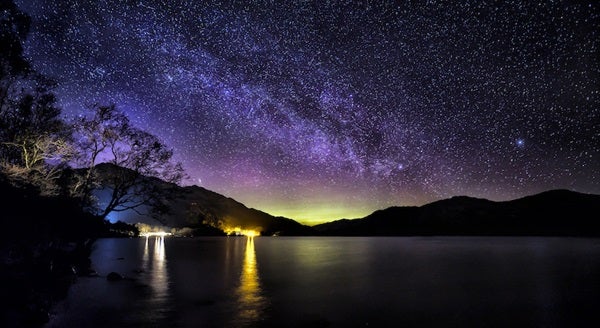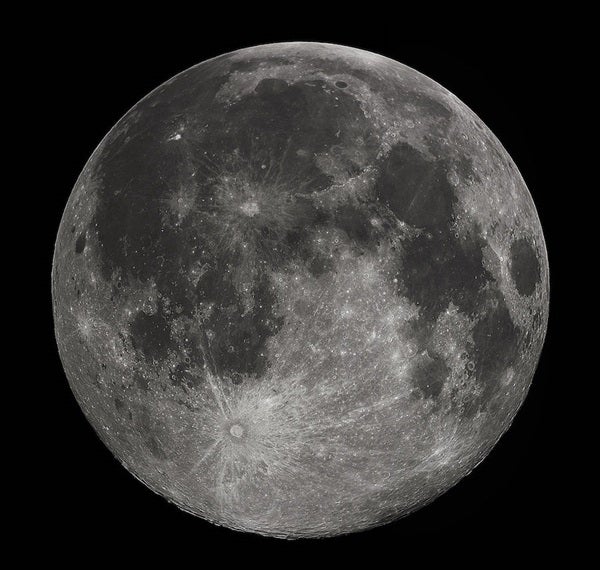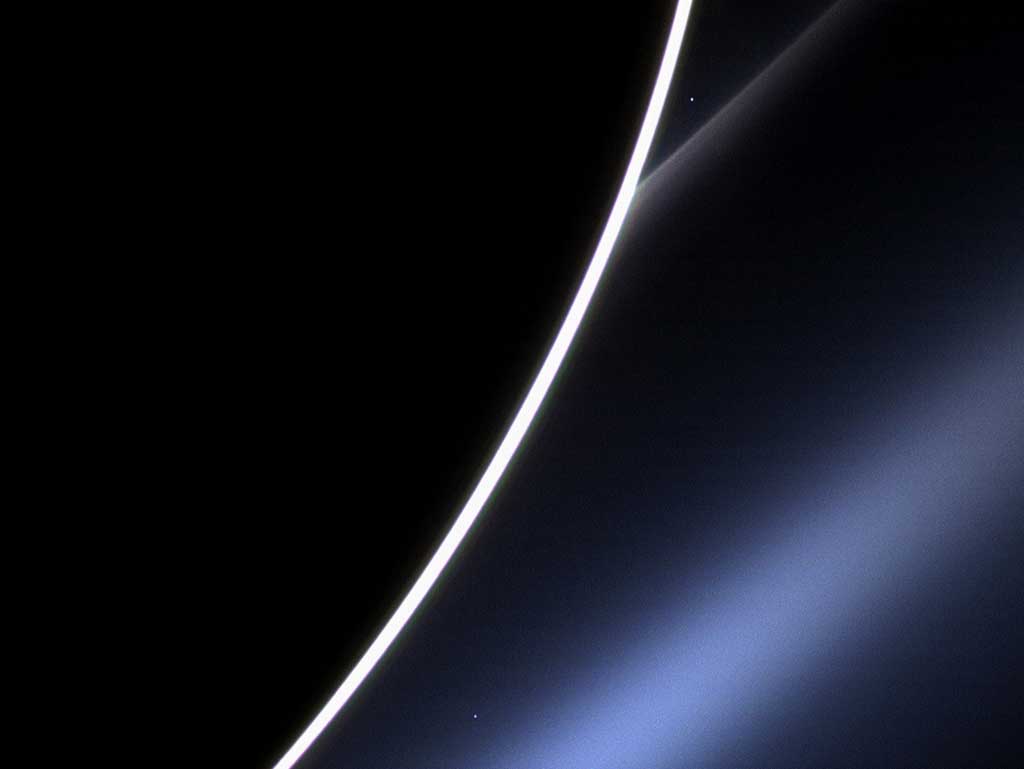This week provides skywatchers with their final opportunity to get a good view of Sirius, the night sky’s brightest star, before evening twilight swallows it. This luminary gleams at magnitude –1.5 low in the southwestern sky. If you look an hour after sunset (approximately 9 p.m. local daylight time), Sirius lies about 15° high. In all likelihood, the star will be twinkling madly as its light passes through the thick layers of turbulent air that lurk near the horizon.
Saturday, April 28
Dwarf planet 1 Ceres is the largest object in the asteroid belt, which lies between the orbits of Mars and Jupiter. It currently shines at magnitude 8.4 and is an easy object to spot through binoculars or a telescope. Ceres resides in the northern part of the constellation Cancer the Crab, which appears high in the west-southwest after twilight fades to darkness. This evening, Ceres lies 0.7° north of 67 and 70 Cancri, a pair of stars that shine between 6th and 7th magnitude.
Sunday, April 29
Full Moon occurs at 8:58 p.m. EDT, but our satellite will look completely illuminated all night. You can find it rising in the east as the Sun sets and peaking in the south around 1 a.m. local daylight time. The Moon lies among the background stars of Libra, less than 10° from brilliant Jupiter.
Mercury reaches greatest elongation today, when it lies 27° west of the Sun and appears some 4° above the eastern horizon 30 minutes before sunrise. Unfortunately, this is one of the planet’s worst apparitions of the year for Northern Hemisphere observers. Mercury shines at magnitude 0.4 and appears as an inconspicuous dot even through binoculars.
Jupiter stands out among the background stars of central Libra from the time it rises around 8:30 p.m. local daylight time until morning twilight is well underway. The giant planet is near its best for the year right now, reaching opposition and peak visibility next week (on May 8). Jupiter shines at magnitude –2.5, which makes it the brightest point of light in the evening sky once Venus sets around 10 p.m. The best time to view the planet through a telescope is when it climbs highest in the south, a position it reaches around 1:30 a.m. Jupiter’s spectacular disk spans 45″, and its dynamic atmosphere shows at least two parallel dark belts.
Tuesday, May 1
The Big Dipper’s familiar shape lies nearly overhead on May evenings. The spring sky’s finest binocular double star marks the bend in the Dipper’s handle. Mizar shines at 2nd magnitude, some six times brighter than its 4th-magnitude companion, Alcor. Even though these two are not physically related, they make a fine sight through binoculars. (People with good eyesight often can split the pair without optical aid.) A small telescope reveals Mizar itself as double — and these components do orbit each other.
Wednesday, May 2
Mars rises by 1:30 a.m. local daylight time and climbs nearly 25° high in the south-southeast by the time twilight commences. The magnitude –0.4 Red Planet stands out against the backdrop of northern Sagittarius. When viewed through a telescope this morning, Mars shows an 11″-diameter disk and some subtle surface details. Look in particular for Syrtis Major, a dark, wedge-shaped feature that lies near the center of the planet’s disk.
Thursday, May 3
Brilliant Venus appears low in the west-northwest after sunset all week. Look for the blazing point of light starting a half-hour after sundown, when it stands nearly 20° above the horizon. The planet shines at magnitude –3.9 and is by far the brightest object in the night sky after the Moon. As the sky darkens, you’ll find the 1st-magnitude star Aldebaran 7° due south (lower left) of Venus. If you point a telescope at the planet, you’ll see a disk that spans 12″ and appears nearly 90 percent lit.
Although the calendar says May, the sky’s Summer Triangle returns to prominence this month. The asterism’s three bright stars — Vega in Lyra, Deneb in Cygnus, and Altair in Aquila — all clear the horizon by midnight local daylight time. An hour later, they rule the eastern sky. Vega shines brightest and appears at the apex of the triangular asterism. Look for Deneb to Vega’s lower left and Altair to the lower right of the other two. The Summer Triangle will grace the Northern Hemisphere’s evening sky from now through the end of the year.
Saturday, May 5
The waning gibbous Moon appears roughly halfway between Mars and Saturn this morning. All three objects rise by 1:30 a.m. local daylight time and climb nearly 30° high in the south by 5 a.m. Mars shines at magnitude –0.5 and is already a little brighter than it was earlier in the week. Saturn glows about half as bright, at magnitude 0.3. The trio stands against the backdrop of northern Sagittarius the Archer. If you view Saturn through a telescope this week, you’ll see its 18″-diameter disk surrounded by a stunning ring system that spans 40″ and tilts 26° to our line of sight.
The Moon also reaches apogee today, at 8:35 p.m. EDT. It then lies 251,318 miles (404,457 kilometers) from Earth’s center, the farthest it gets from our planet during its month-long orbit.
Sunday, May 6
The annual Eta Aquariid meteor shower peaks before dawn. Unfortunately, the waning gibbous Moon shares the sky, and its bright light will wash out fainter meteors and render the brighter ones less impressive. Don’t give up hope, however. For the best views, find an otherwise dark site and position yourself where a tree or building blocks the Moon’s direct light. The Eta Aquariid shower derives from bits of debris ejected by Comet 1P/Halley during its many trips around the Sun.
Although the Moon interferes with the Eta Aquariids, take a few minutes to enjoy a binocular view of our satellite next to Mars. The Moon slides 3° due north of the Red Planet at 3 a.m. EDT.












